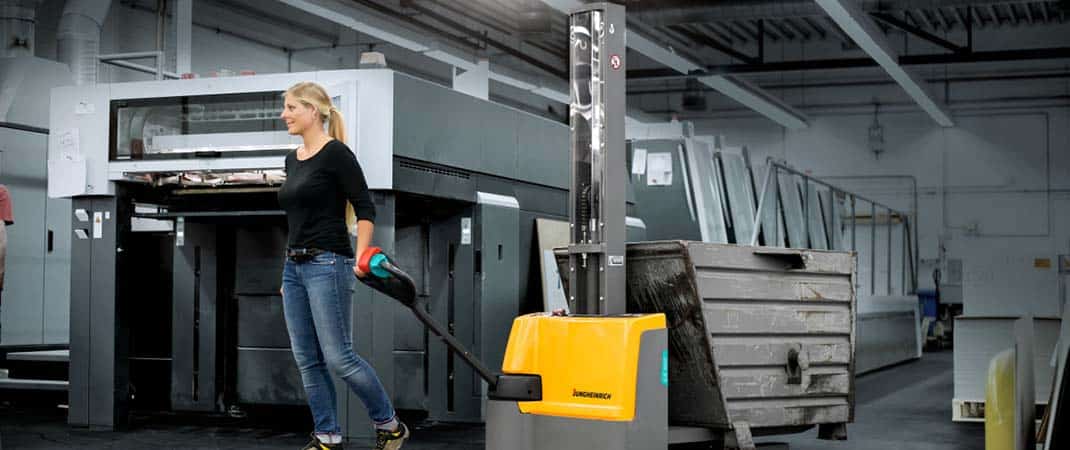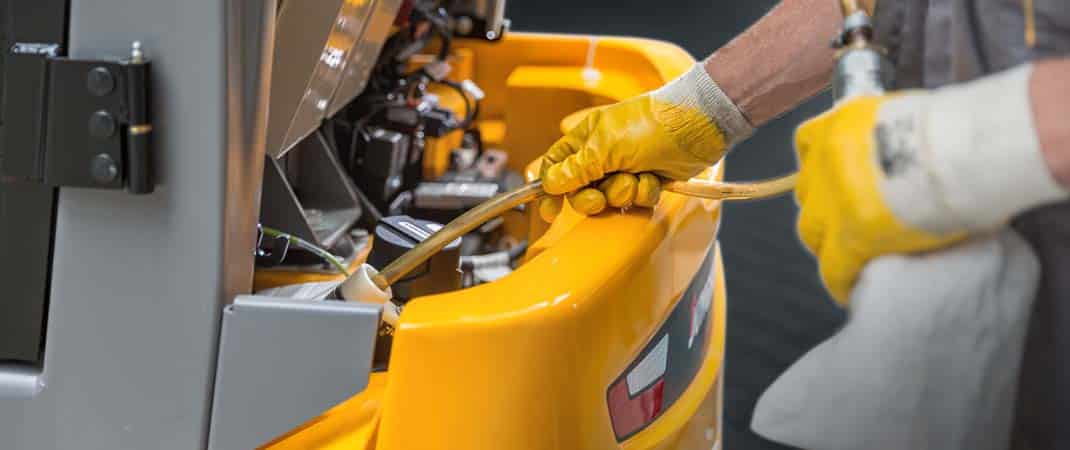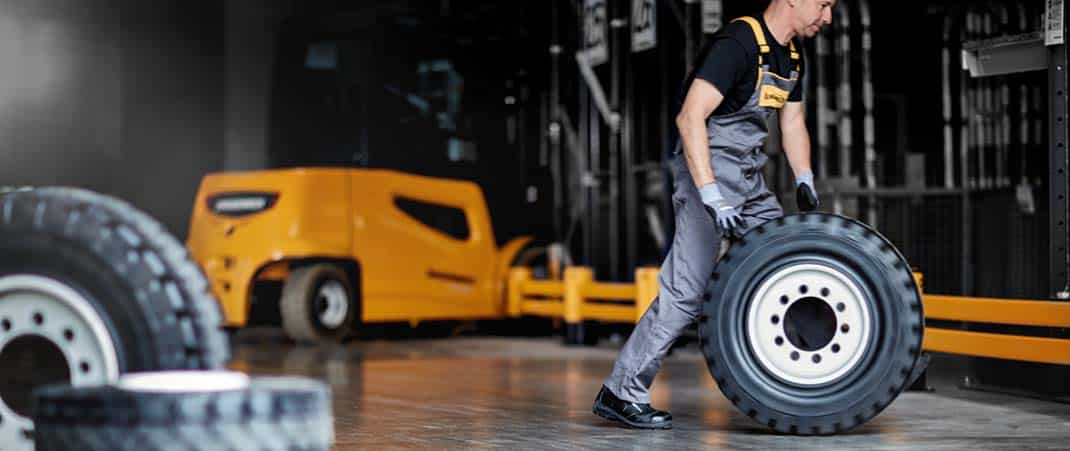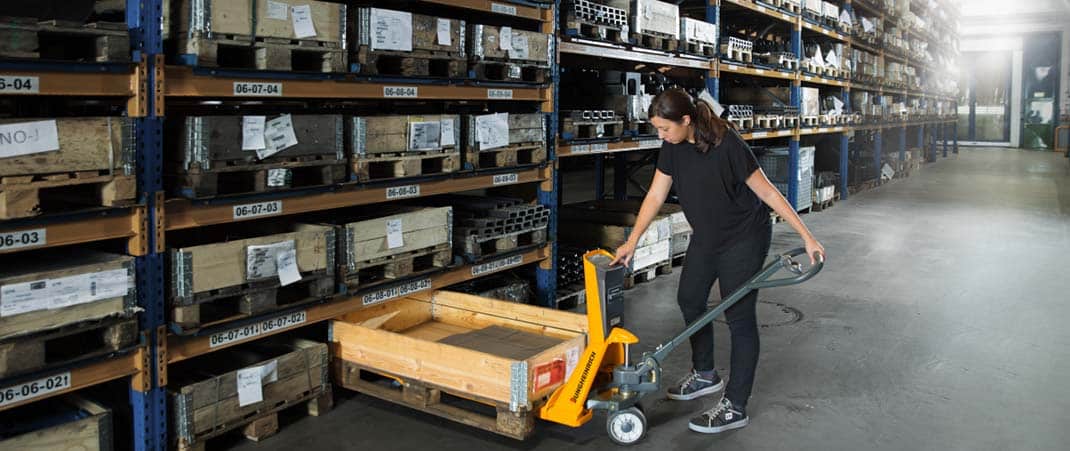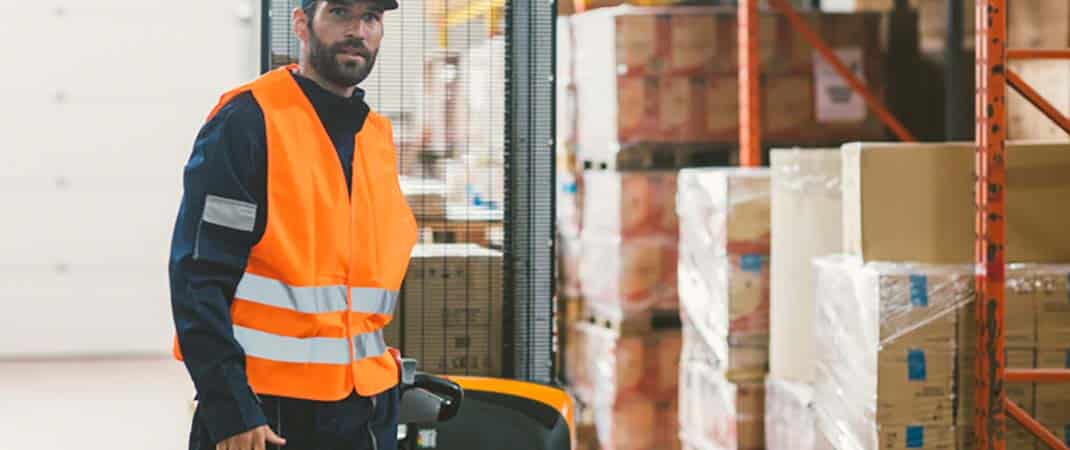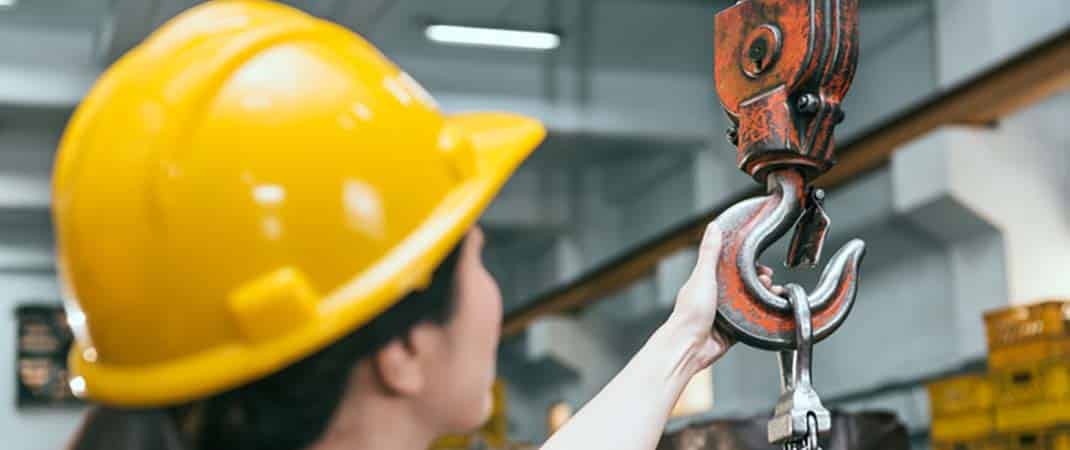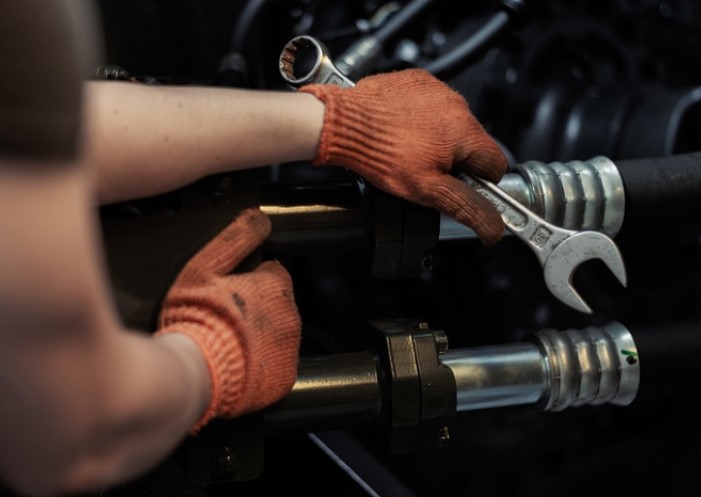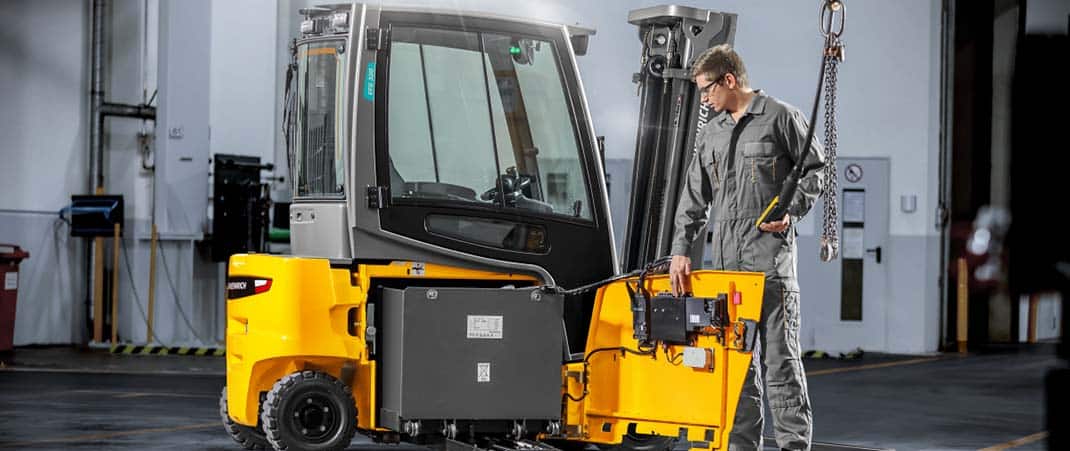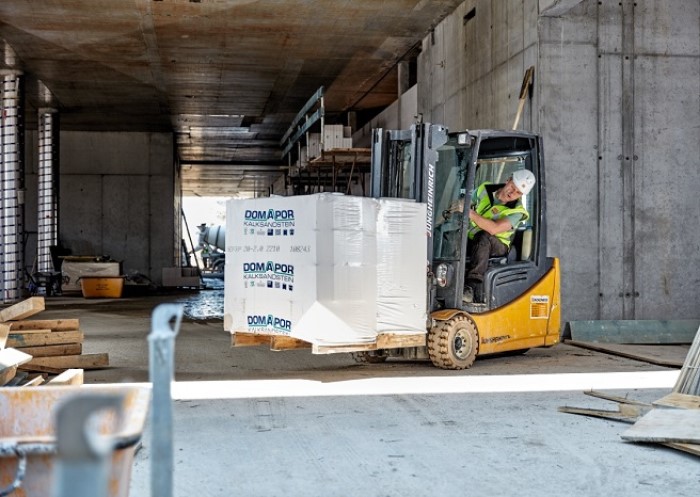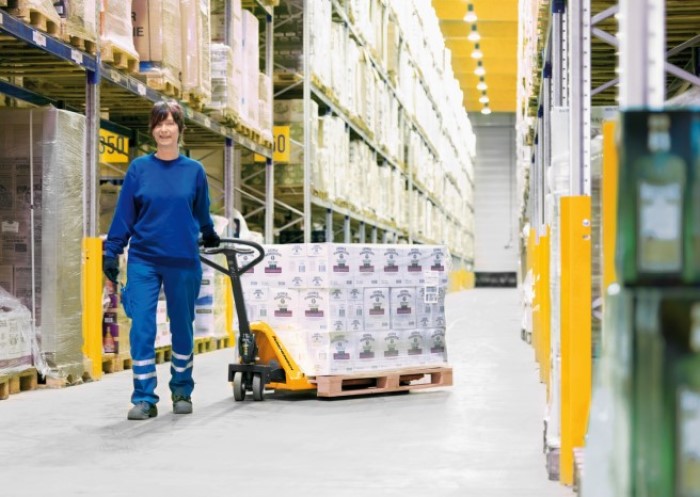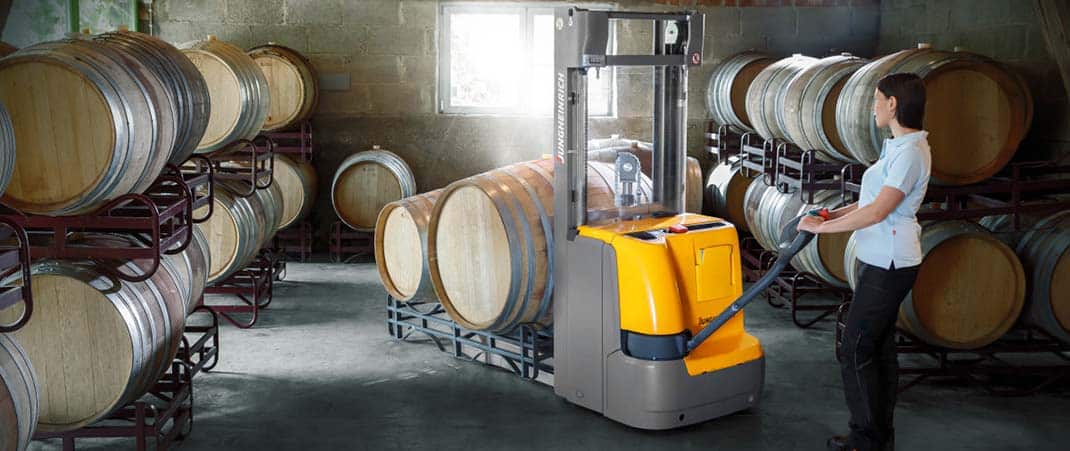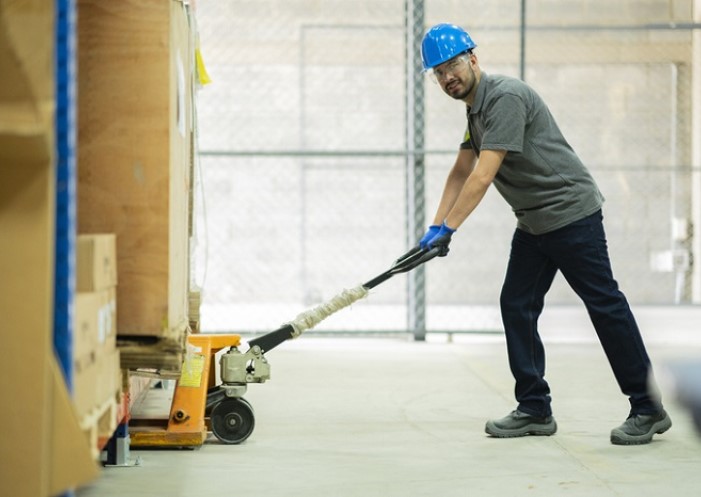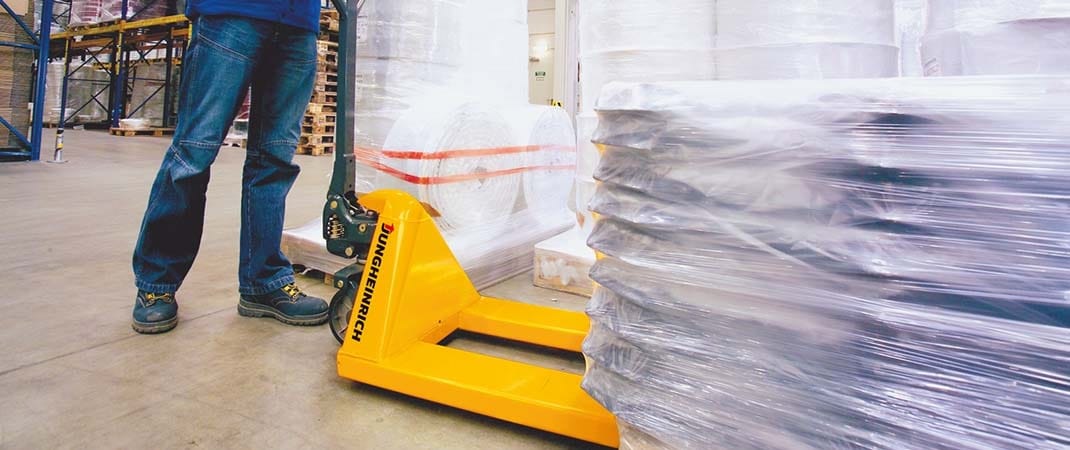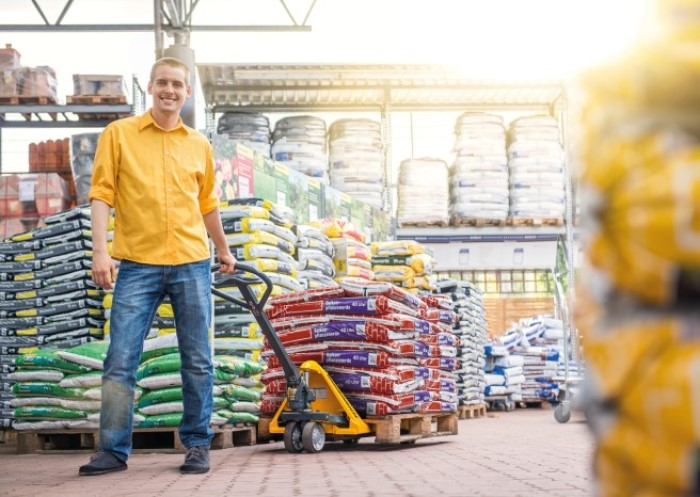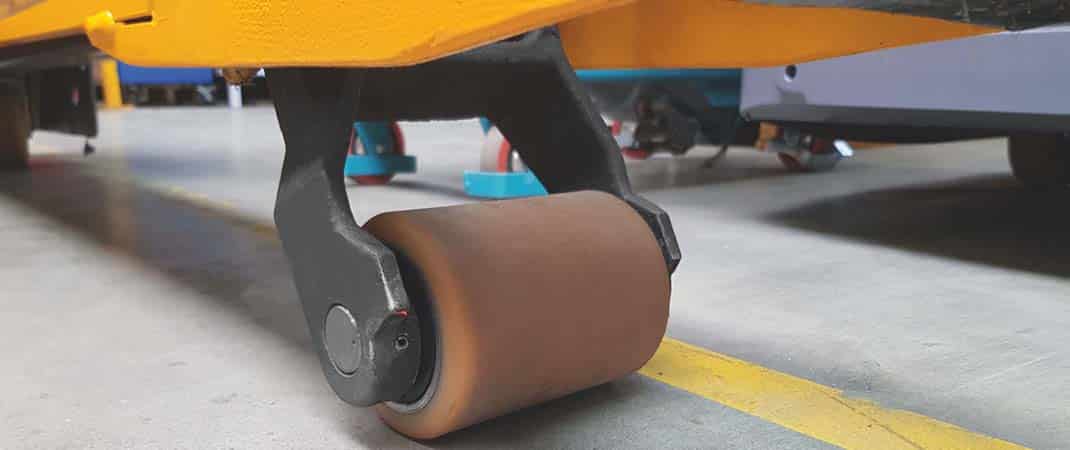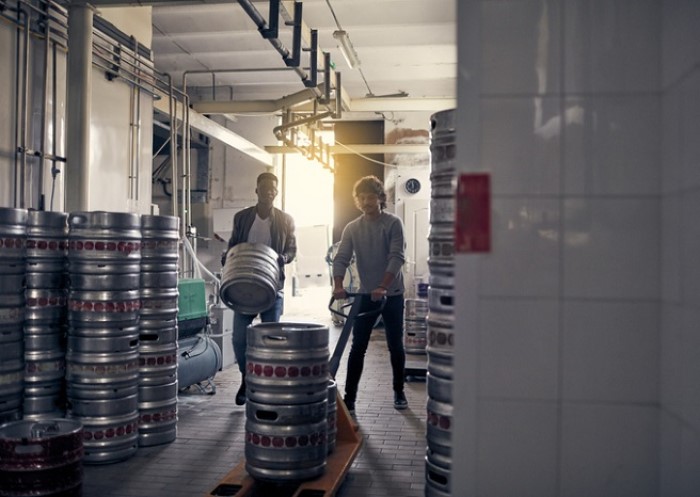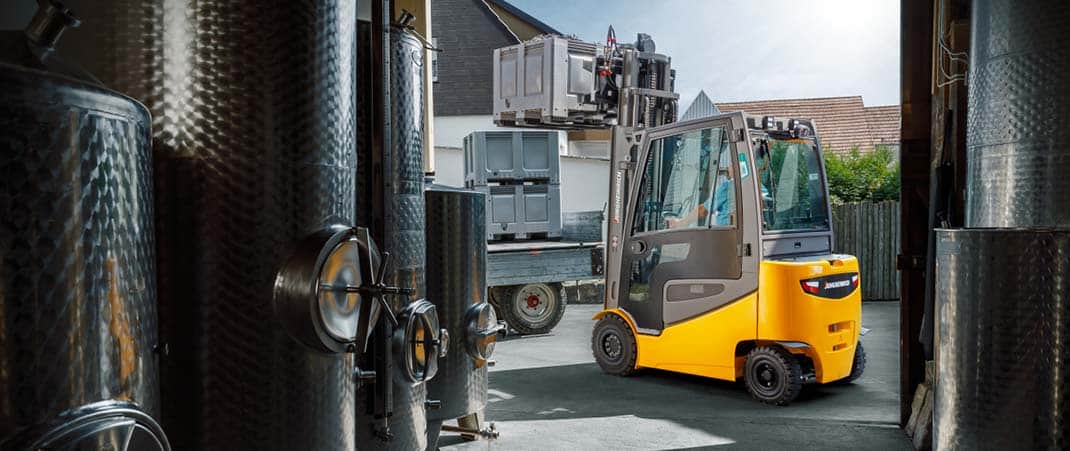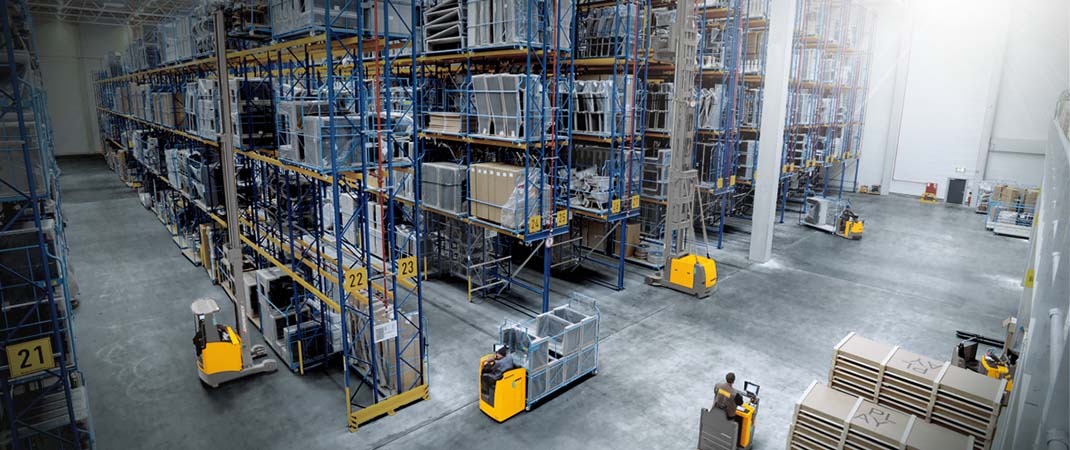Table of contents
One of the most decisive criteria when buying a forklift truck is the mast. A forklift mast is the device that allows a forklift to lift and move heavy loads easily. Not only does the maximum lifting height depend on the mast type, but it also has an influence on the load capacity and the possible areas of application of the industrial truck.
With different lifting heights, telescopic variants, and additional functions, you have numerous options to choose from when it comes to masts, allowing you to optimally adapt them to your warehouse and operating logistics. In our guide, you will discover which forklift masts are available, how they differ from each other, what advantages they each offer and when a mast with a large free lift can be useful.
A comparison of hydraulic lifting masts for high lift trucks
A forklift mast is operated either exclusively by hand hydraulics or with the support of an electric motor. You can read more about hydraulics in our guide about its function and application. We have summarised the differences between manual hydraulic and electro-hydraulic lifting masts below:
- Manual Hydraulic Lifting Masts
In the case of hand-hydraulic forklifts – such as hydraulic stackers – the hydraulic mast is activated manually. The load is lifted either by means of pumping the tiller, by repeated operation of a foot pedal, or via a hand crank. - Electro-hydraulic Lifting Masts
In contrast, electric stackers are equipped with an electro-hydraulic lifting device. The lift mast, also called the forklift mast, moves the load carrier and the load vertically. The dimensions of the masts are essential criteria for comparing the special features of the different masts. The following terms are of particular importance:
| Term/Parameter | Meaning |
|---|---|
| Forklift mast, overall height | The overall height refers to the greatest height of an industrial truck measured from the ground. However, in the case of industrial trucks with a high-lift device, it can change depending on the mast, depending on whether the mast is retracted or extended. |
| Lift | The term refers to the vertical path of the load carrier from the lowered state to the highest point in the raised state, measured in each case at the top edge of the load carrier (e.g. the fork or platform). |
| Maximum lifting height | The term refers to the greatest possible distance from the ground to the highest position of the load carrier (top edge of the fork or platform) in the lifted state. |
Depending on the types of aisles in your warehouse – wide aisles (WA), narrow aisles (NA), and very narrow aisles (VNA) – the high lift truck must meet different requirements. Choosing the right forklift mast depends on the following questions:
- How is the intralogistics of your warehouse structures?
- What are the processes in your warehouse?
- At what heights are the goods to be stored?
- What are the ceiling heights of the premises?
- Do low gates and doorways need to be considered?
Simplex mast
The simplex mast – also known as a single stage lift mast – consists of a lifting frame in which the fork carriage runs centrally. The fork carriage is lifted by a lifting cylinder, which is usually located in the centre, either directly or by means of a chain linkage. The simplex mast does not change its overall height even when the forks are raised to the maximum lifting height.
| Advantages | Disadvantages |
|---|---|
| • More stable mast profile than a single-column mono mast • Does not change overall height even with max. raised forks | • Reach comparatively low lifting heights (lower than the headroom) |
Mono mast
A mono mast is a narrow, single-column mast that is always installed in the centre of the truck. The lifting device with the load forks is attached to it, which can be moved upwards. The overall height of the mast remains unchanged during the lifting process, as the lifting carriage moves upwards directly in the stand mast. Only when the maximum lifting height is reached does the overall height increase slightly due to the fork carriage assembly.
| Advantages | Disadvantages |
|---|---|
| • Comparatively low dead weight, therefore, can also be used on intermediate floors • Safe working as a clear view of the goods to be transported and the storage environment is always possible • Can also be used as a mobile worktable • Overall height does not change, therefore can also be used in rooms with comparatively low ceiling heights | • Not as stable as duplex or triplex masts • Only low lifting height achievable (lower than headroom) |
Duplex mast
The frame construction of the duplex mast is identical to the simplex mast. However, in addition to the outer standing mast, the duplex mast has an inner driving mast. The fork carriage, in turn, runs in the inner lift frame. It is moved together with the driving mast via a lifting cylinder by means of a simple chain deflection. The duplex mast is a double lifting mast that telescopes.
Info: What does telescoping mean? The lifting height of the forklift mast can be changed using the telescoping function. This allows pallets or other loads to be lifted to different heights.
Duplex masts are available in two different designs for this purpose:
- Duplex mast with twin telescopic lifting mast (ZT mast): Most electric high-lift trucks with ZT masts have a small free lift of 100 mm, depending on the vehicle model. The lift carriage ini-tially moves up to 100 mm – without changing the overall height of the mast. The lift ratio after exhausting the small free lift is then 2:1, which means that raising the forks by 200 mm causes the mast to extend by 100 mm.
- Duplex mast with additional stroke (ZZ mast): The mast of the ZZ masts is designed like the double telescopic mast (ZT mast) but has an additional lifting cylinder with which a particularly large free lift (additional lift) is achieved. This free lift is also realized by means of a chain de-flection. Once the large free lift has been exhausted, the fork carriage and the traveling mast extend in a ratio of 1:1.
| Advantages | Disadvantages |
|---|---|
| • Stable mast construction offers higher lifting heights than mono and simplex masts • Small free lift enables floor-free lifting and moving of the transported goods without changing the overall height • Large free lift ideal for stacking and unstacking goods in rooms with low ceilings, in wagons or shipping containers | • Cannot reach same height as vehicles with triplex mast • For specific applications a higher free lift may be required |
Triplex mast
Forklifts with triplex mast (also: triple telescopic mast with additional lift (DZ mast)) are particularly versatile. This is due to the telescopic mast, which can reach three times the lifting height of the outer mast. The three-stage mast consists of a fixed outer standing mast connected to the vehicle with two movable inner masts, whereby the lift carriage with the fork carriage moves upwards on the very innermost mast. This type of mast can thus be telescoped a total of three times, thus achieving lifting heights of up to approx. 6 meters.
Industrial trucks with triplex mast are equipped with a particularly large free lift via an additional lift cylinder. First, the central cylinder here extends the fork carriage with a chain deflection in a ratio of 2:1. Then the middle and inner lift frames extend in the same ratio. The fork carriage is always at the highest point of the inner lifting frame.
| Advantages | Disadvantages |
|---|---|
| • Best ratio of overall height to lifting height: very high lifting heights can be achieved with low overall height • Equipped as standard with particularly large free lift • Suitable for environments with low ceiling heights and passageways as well as for loading and unloading high storage racks | • Cost-intensive to purchase, as the mast is particularly sophisticated in terms of technology |
Lift masts with free lift – Advantages for users
For warehouse environments where, for example, low passageways must be passed with the forklift, industrial trucks with free lift can be a sensible purchase.
Free lift refers to the height to which the lift carriage of a high lift truck with duplex or triplex mast can be raised without the inner mast extending: So, for a truck with, approximately 45 cm of free lift, you can raise the load to that height without changing the overall height of the truck.
The free lift function for forklift masts is divided into two different types:
- Small free lift: This lift raises the fork carriage up to 100 mm without changing the overall height of the lift mast. In this way, pallets can be lifted and moved free of the floor without changing the overall height.
- Large free lift (full free lift): A large free lift is achieved by a second lift cylinder: The inner mast does not extend until the free lift is exhausted. Forklift masts with full free lift can thus be used for loading and unloading containers, trucks and in rooms with low ceilings as well as for stack-ing and retrieving goods in high storage racks.
On a high lift truck without free lift, the telescopic mast extends as soon as you lift the load. Due to the resulting change in the height of the mast, this has a decisive influence on the possibilities for using the lift truck indoors: In warehouses or sales areas with low ceilings or doors, lift trucks without free lift can only be used to a very limited extent or not at all.
FAQ on lift mast types for forklifts
A mono mast is a single column lift mast positioned centrally on the truck. The simplex mast, on the other hand, is a two-column lift frame that can handle higher payloads due to its more robust design. Neither type of mast can be telescoped, so they do not change their overall height.
A free lift is the height to which the lift carriage of a high lift truck with a duplex or triplex mast can be raised without the inner mast extending. Within the free lift, therefore, the overall height of the truck does not change. A distinction is made between small free lift (approx. 100 mm) and large free lift (also: full free lift).
Only very few electric high-lift trucks retain their full rated capacity at the maximum utilized lift height. In this case, the residual lifting capacity shown in the lifting capacity diagram must always be considered.
Please note: The regulations mentioned above represent only a selection of the most important legal requirements. Please refer to the listed organisations and directives for more detailed information. If in any doubt, consult experts or contact the relevant regulatory authorities.
Image source:
© Jungheinrich AG

